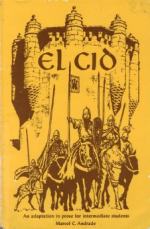|
This section contains 562 words (approx. 2 pages at 400 words per page) |

|
1090s: The primarily agricultural economy of medieval Spain was influenced by the Reconquista. The repopulation that accompanied the capture of Moorish territory led to the establishment of fortified Christian towns which became economic centers for international trade. The Cid, however, depicts an archaic gift economy, in which a man's status depends on how much wealth he can win and then distribute.
1207: Towns garner increasing population and importance, trade increases, and commerce expands. The expansion of the market economy, dominated by monetary exchanges, credit, and international commerce, characterizes this period.
1990s: Spain's inclusion in the European Union shows that it has a strong economy. However, unemployment remains around 21%, the near-worst rate in Europe in 1996.
1090s: Christian culture was in the process of a great renewal, which started with the Church reforms begun in the monasteries of Cluny and Citeaux in France. Bishop Jerome, in the...
|
This section contains 562 words (approx. 2 pages at 400 words per page) |

|




